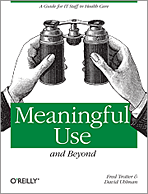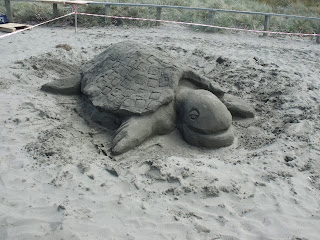I love books, especially old ones. Recently I learned a simple dinner table trick from a 110-year-old magic book. It involves picking up a napkin with both hands and, without releasing either corner, tying the napkin into a knot. Good fun and likely unavailable anywhere but in this very old tome. That fact, though, does not make me love ebooks any less or think that they somehow are a better long-term solution for the reading public. Celebrated author Jonathan Franzen thinks otherwise.
Author of The Corrections and Freedom, Franzen is revered for his prose, attention to detail and ear for the inner lives of sometimes desperate (and or depressed) people. I think his writing is excellent, but he is way off base on ebooks.
In a speech given during Britain’s Hay Festival in Cartagena, Columbia, Franzen said he prefers paper technology. “I can spill water on it and it would still work!” said Franzen, according to a report in The Telegraph. Franzen was also fixated on the idea that ebooks can or will change over time. Print is permanent and Franzen apparently prizes that permanence. For the record, Franzen’s books are available as ebooks.
I have no idea why Franzen assumes that publishers and authors are changing their books for the e-editions. With the exception of no longer knowing exact page numbers, I don’t see anyone changing their books for the Amazon Kindle, Kindle Fire, Barnes & Noble Nook, or the Apple iPad and iBooks. An ebook reader is just a new delivery mechanism for literature.
To make matters worse, Franzen throws “capitalists” into the mix. They hate print books, he said, because these physical books will continue to work 10 years from now. “It’s a bad business model,” noted Franzen. I think capitalists like any kind of book they can sell you in mass quantities. I don’t think they love ebooks more because they won’t last as long (or at least the platforms they’re on won’t). My guess is that capitalists appreciate the speed with which you can get an ebook to market and the enhanced opportunities for broad distribution. Think about it: Millions of Steve Jobs bio books (one of ebook’s top three sellers in 2011) were delivered to readers, and I bet a vast portion of them did not ride on trucks. They sped through the air from, say, Amazon’s servers to millions of Kindles around the world.
If Franzen is interested in permanence, shouldn’t he cheer the fact that people are now reading books, but not hacking down the world’s trees to make them or sending carbon-monoxide-producing global warming-promoting 18-wheelers around the county to deliver thousands and thousands of physical books (though, to be fair, this is still happening, too)?
No, Franzen is fixated on the idea of physical books. I partially agree with him: Printed books are a powerful, romantic idea. As noted, I love them and have a rather large collection of both large format books and many from the late 1800s and early 1900s. It’s not unusual for me to pull one of the shelf and start thumbing through it, just to look at the old engravings or marvel at the notes scribbled near the binding by, perhaps, the first owner. That romantic ideal, however, doesn’t make me want to read stop reading ebooks on my Kindle, iPad or iPhone.
Oddly, my own 13-year-old daughter is a little like Franzen. She has never read an ebook. I blame J.K. Rowling. Until recently, the author refused to offer the Harry Potter series as ebooks. So my daughter’s only choice has been to lug around each increasingly larger volume in the series. She’s on the final tome now and it is a monster. Yet, she insists she never wants to own a Kindle. She says she simply loves books too much and cannot imagine a time when they’re gone.
I hate to tell her this, but ebooks are the future. They’re cheaper to produce, easier to distribute and, dare I say it, probably promote reading better than your local library. And while Franzen is concerned about ebook versions differing from their real-world counterparts, I’m cheering the emergence of new kinds of ebooks that take the IRL reading experiences to places we scarcely imagined on the printed page. One need only look to interactive children’s books and etextbooks for evidence.
What Franzen fails to realize is that while books are beautiful, permanent things they’re also inconvenient. Years ago you traveled with, maybe, one book and some magazines. You wouldn’t consider taking two big books (maybe two thinner paperbacks). But even if you weren’t traveling, when you finished one book, you needed to head to the library or bookstore to buy another. When I finish an ebook, I simply connect to Kindle’s Whispernet and buy and download a new one. Like most people I know, I read more now with my Kindle than I ever did before.
My reaction to Franzen’s comment was immediate and negative. Not surprisingly, when I posted news of Franzen’s comments on Google+, the tech-savvy audience echoed much of my own sentiments. They derided Franzen for appointing himself “guardian of society” and noted how Franzen’s concerns are not unlike those who feared what the rise of the Guttenberg press would do to publishing.
I will not lie and say that I won’t miss print when it’s gone, but, as Franzen himself predicts, it will be a memory in 50 years. Franzen’s glad he won’t be here to see it. I, on the other hand, hope to live well past my 97th year and to thoroughly enjoy ebooks from now to then and beyond. Maybe Franzen will change his mind and join me.
Do you decry the rise of ebooks and inevitable fall of print? Share your worries (or lack thereof) in the comments.
Bonus: Up Close with the Barnes & Noble Nook Tablet
View As Slideshow »Barnes & Noble's Nook Demo Barnes & Noble's Nook Demo
Barnes & Noble's Nook Demo Barnes & Noble's Nook Demo
Barnes & Noble's Nook Demo Barnes & Noble's Nook Demo
Barnes & Noble's Nook Demo Barnes & Noble's Nook Demo
Barnes & Noble's Nook Demo Barnes & Noble's Nook Demo
Barnes & Noble's Nook Demo Barnes & Noble's Nook Demo
Barnes & Noble's Nook Demo Barnes & Noble's Nook Demo
Barnes & Noble's Nook Demo
Here's one more argument in favour of ebooks and ranting against paper books. I am divided, there are both sides to the argument. As much as I enjoy ebooks, I think paper based books are not going away any sooner and actually book making and sharing is still important. Having said that, I think he is right on the spot where he writes ebook reader is just a new delivery mechanism for literature.



























